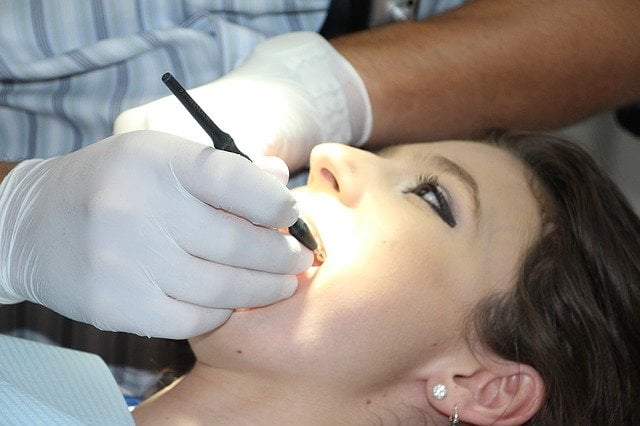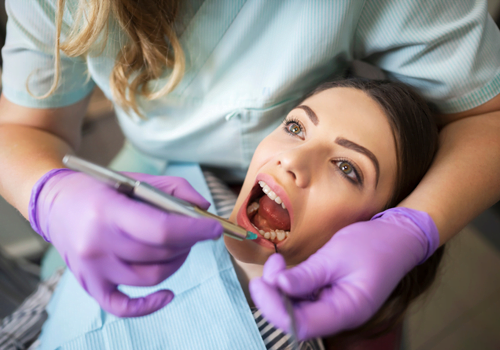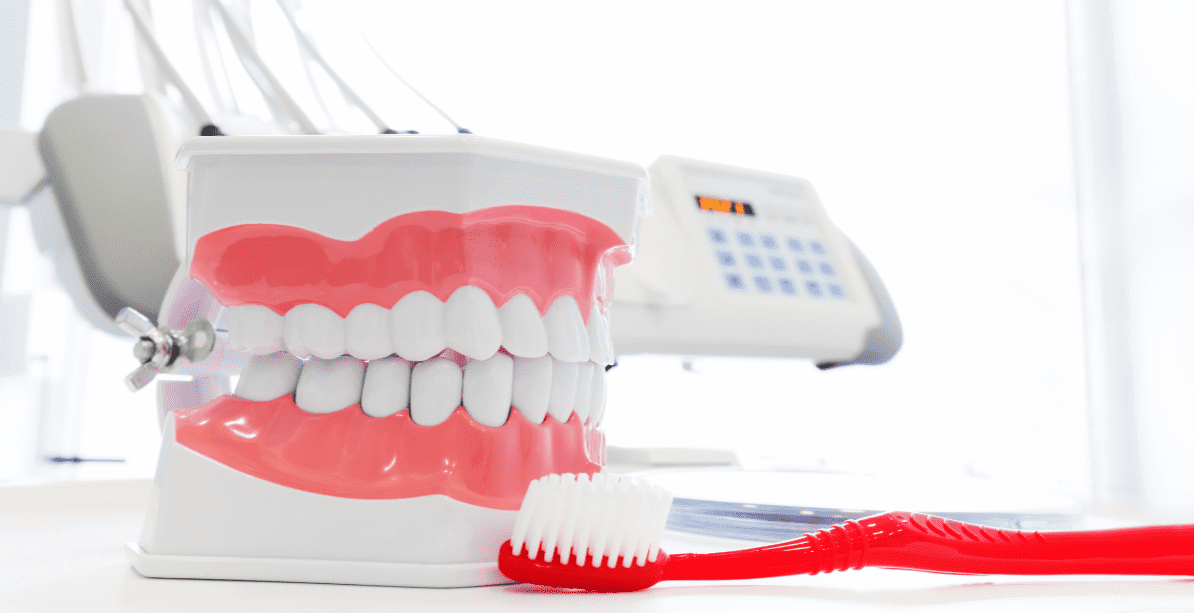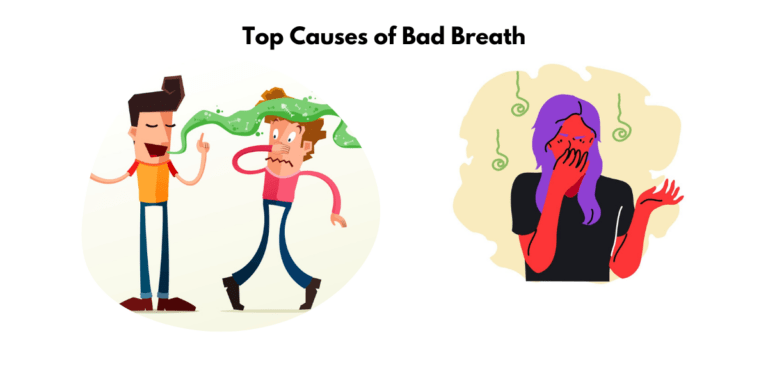What Happens During a Professional Tooth Cleaning? Types of teeth cleaning, when to have your teeth cleaned, and more
What is professional tooth cleaning?
A professional tooth cleaning, also known as prophylaxis or dental deep cleaning, is a dental procedure performed by a hygienist every six months. This cleaning aims to prevent cavities, stop tooth loss, brighten the smile, and promote overall health.
During the procedure, the hygienist uses specific tools to remove bacteria buildups, such as scrapers and picks, and an electronic device called an ultrasonic scaler for deeper stains or discolorations.
Once the teeth are clean, they are polished with a prophylaxis paste. Not only does a professional teeth cleaning remove plaque and tartar, but it also makes teeth less prone to staining and helps make them stronger and more resilient.

Why is it important to have regular teeth cleanings?
Your smile is one of the first things people notice about you, so keeping your teeth and gums healthy is important. Regular dental cleanings are an important part of preventive care. Professional cleanings remove plaque and tartar that can lead to tooth decay and gum disease.
A professional teeth cleaning removes plaque and tartar buildup
A professional teeth cleaning removes plaque and tartar buildup through scraping and polishing. The hygienist uses specific tools, such as scrapers, picks, and an ultrasonic scaler, to carefully remove the buildup of plaque and tartar from the surface of the teeth.
The ultrasonic scaler removes the deeper stains or discolorations that may have formed. Once the plaque and tartar have been removed, the hygienist polishes the teeth with a special prophylaxis paste. This process helps to keep the teeth clean and free from bacteria and gives the teeth a brighter and healthier look.
It improves gum health and reduces the risk of gum disease
Regular teeth cleanings are essential in maintaining oral health and preventing gum disease. Cleanings help to remove plaque and tartar buildup, which can lead to gum disease.
During a cleaning, your hygienist uses special tools to remove any deposit from the surfaces of your teeth above the gums. This helps to prevent gum disease and even treat mild forms of the disease (called gingivitis). In addition, having your teeth cleaned every six months helps to keep bad breath at bay.
It checks for and removes any existing dental cavities
Regular dental cleaning is an important part of preventative dental care. During a dental cleaning, your dentist or hygienist will check for cavities and remove any existing cavities. To do this, they will use special tools to scrape away plaque, stains, and calculus (tartar) that have built up above the gum line. An ultrasonic scaler may be used for deeper stains or discolorations.
Next, the teeth are polished with a prophylaxis paste specially formulated for this purpose. The technician may also take X-rays to look for signs of oral disease or abnormalities that require treatment. Following the scraping and polishing, the technician will use floss to remove any paste stuck between the teeth.
Lastly, a fluoride treatment may help keep the teeth strong and prevent cavities. Regularly visiting the dentist can ensure that any existing cavities are removed, and your mouth is kept healthy.
It removes food debris and stains from the teeth
Regular teeth cleaning removes plaque, tartar, stains, calculus, and discolorations from above the gum line. It also helps to prevent cavities, gingivitis, and periodontal disease and strengthens your teeth. The hygienist uses specific tools such as scrapers, picks, and even an ultrasonic scaler to remove the buildup of these substances and finishes off with a high-powered electric brush and a prophylaxis paste to polish the teeth.
It improves your overall oral health and well-being
Regular teeth cleanings are essential for maintaining oral health and preventing diseases and infections. During a professional dental cleaning, plaque and tartar buildup is removed from the teeth and gums, which can lead to tooth decay. Additionally, routine examinations allow for early detection of any oral diseases or cancer, which can be treated before it becomes more serious.
It reduces the risk of developing oral bacteria
Having regular teeth cleanings can greatly reduce the risk of developing oral bacteria. Dental cleanings will remove excess plaque and tartar, breeding grounds for bacteria. This, in turn, will reduce the number of bacteria in the mouth, thus preventing tooth decay, gum disease, and other oral health issues.
It improves the look of your teeth and smile
Regular teeth cleanings can improve the look of your teeth and smile by maintaining oral health, preventing oral diseases and infections, and detecting them early. Regular cleanings will remove plaque and tartar buildup on your teeth’ surface and can help prevent gum disease and tooth decay.
It can help prevent future dental problems
Regular tooth cleanings help to prevent future dental problems by removing plaque and tartar buildup, which can lead to decay and gum disease. Dental cleanings can also help to detect oral diseases and infections in their early stages, which can be treated more effectively if identified early.
It improves overall oral hygiene and brushing habits
Regular tooth cleanings can improve oral hygiene and brushing habits by helping maintain oral health, prevent oral diseases, and detect early signs of infection. Cleanings are also important as they remove plaque and tartar buildup, which can lead to bad mouth problems like tooth decay.
It ensures that your dental cleaning is performed according to the latest standards
Having regular dental cleanings is essential to ensuring optimal oral health. While brushing and flossing at home is essential to removing plaque and bacteria buildup, a professional dental cleaning can provide more thoroughly clean teeth and help remove any calculus (also known as tartar) built up above the gum line.

Types of teeth cleanings
Dental cleanings are an important part of oral care. They remove plaque and tartar from your teeth, which can cause cavities, gum disease, and other problems.
Regular teeth cleaning
Regular teeth cleaning is a routine procedure conducted by a dental hygienist to remove plaque and tartar deposits from the surfaces of your teeth.
This cleaning is a critical preventative measure to maintain good oral hygiene and health, as it helps fight gum disease, bad breath, and tooth decay.
The hygienist will use special tools to scrape away bacteria buildup that your toothbrush cannot remove, examine your teeth for signs of infection, and take X-rays if necessary.
Deep dental cleaning
A deep dental cleaning, also known as scaling and root planing or periodontal debridement, is a more extensive type of teeth cleaning used to treat more severe cases of gum disease.
It involves scaling and cleaning deeper areas along the roots of the teeth and is used to remove bacteria below the gum line and around the roots of the teeth, as well as to smooth out the surfaces of the tooth roots. This helps to prevent gum disease from advancing and causing tooth loss. It may involve using a local anesthetic or sedation for comfort, and an antibiotic gel may be applied to the teeth during the cleaning.
Scaling
Scaling and root planing is a deep teeth cleaning procedure that is slightly more invasive than other teeth cleanings. It involves deep cleaning the gums, gum lines, and other supporting structures of the teeth.
Scaling involves removing plaque and tartar from the tooth’s surface and in the gum pockets below the gum line, while root planing smoothes the tooth root’s surface. This helps gums reattach to teeth and eliminate gum pockets.
Fluoride treatment
A fluoride treatment is a preventative measure to protect teeth from cavities and decay. It is applied after dental cleaning to help fight cavities for several months.
During a fluoride treatment, a foamy gel or paste is placed into a mouthpiece that fits over the teeth and is usually left on for one minute. In addition, fluoride varnish is painted onto the teeth with a small brush. Afterward, a rinse containing liquid fluoride is used to clean out the mouth.
Prophylaxis
Prophylaxis is a dental procedure designed to prevent disease by removing plaque and tartar, as well as minor stains, from the surface of teeth, gums, and between teeth.
Unlike regular teeth cleaning, prophylaxis is mainly used on individuals with an overall healthy mouth and can help them maintain their oral hygiene. It is more thorough than regular brushing and flossing, using specific tools to scrape away deposits such as plaque, stains, and calculus (or tartar) above the gum line.
After the teeth have been cleaned, they are polished with a prophylaxis paste specifically formulated for this purpose.
Teeth whitening
Teeth whitening is a cosmetic dentistry procedure used to remove stains and discoloration from teeth. It is a safe, non-invasive process that uses a bleaching gel to lighten discolored enamel and dentin. The bleaching gel is chemically activated, so there is no discomfort or change to your tooth’s structure.
The purpose of teeth whitening is to restore the natural color of your teeth by removing years of stains and discoloration. This can be done through various methods, such as professional in-office treatments, take-home kits, or over-the-counter products.
Professional in-office treatments use high-concentrated bleaching products, while take-home kits use lower concentrations. Over-the-counter products, such as toothpaste and whitening strips, can be effective but may take longer than other methods. Additionally, inlays, onlays, dental bonding, porcelain veneers, and Invisalign are all other cosmetic dental treatments used to whiten teeth.
Gum disease cleaning
Gum disease cleaning is a type of dental cleaning that is used to treat gum disease. It is more extensive and lengthy than regular dental cleaning. It involves scaling in deeper areas along the teeth’ roots and smoothing out the roots if needed.
Unlike typical dental cleaning, it treats gum disease before it escalates and causes tooth loss. During a gum disease cleaning, the dentist will use special techniques to remove plaque, tartar, and bacteria below the gum line, all the way down to the tooth roots.
Tartar removal
Tartar removal is a dental procedure to remove plaque and tartar buildup on the teeth and along the gum line.
Tartar is hardened plaque that has been allowed to accumulate on the teeth and can only be removed at a dental office.
Tartar removal is done by a dental hygienist using a scaler or hand instrument, similar to a metal scraper, to gently remove the tartar from the teeth. This process removes the hardened deposits and helps to prevent gingivitis and tooth decay.

FAQs
Here are some of the most frequently asked questions about teeth cleaning:
How long does a teeth cleaning take?
A teeth cleaning typically takes between 30 minutes and one hour. During the appointment, you will recline in a comfortable dental chair while the dentist and hygienist examine your teeth and remove plaque and tartar. Next, they will polish your teeth using a gentle abrasive paste. If X-rays are needed, the appointment may take longer. If the dentist finds any issues, they will discuss potential treatment options with you.
Here is an example of a typical teeth cleaning appointment:
- Your dentist or hygienist will start the appointment by examining your teeth and gums to check for signs of plaque buildup, inflammation, and other problems.
- They will then use a scaler to remove the plaque from your teeth.
- Following that, they will use an electric toothbrush to polish and clean your teeth with gritty toothpaste.
- Lastly, they will finish with a final flossing and remove the toothpaste and any remaining plaque.
- Depending on the dentist, they may suggest a fluoride treatment after the cleaning. This could add another five to 10 minutes. The dental hygienist uses a metal plate or small brush filled with sticky fluoride and applies the gel, allowing it to sit for a minute before the treatment is finished.
How much does a dental cleaning cost?
The cost of a dental cleaning can vary significantly depending on your location, age, and the type of dental service you need. A dental cleaning can range from around $100 to several hundred dollars when paid out-of-pocket.
If you have dental insurance, most plans should cover 100% of preventive care and 60-80% of basic procedures. You can also use funds from your health savings account (HSA) or flexible savings account (FSA) to pay for additional dental cleanings.
The American Dental Association (ADA) recommends visiting your dentist at least twice a year for optimal oral health. However, a cleaning every three to four months may be necessary for those at high risk for gum disease. A teeth cleaning typically takes between 30 minutes and one hour.
When should I have my teeth cleaned by a professional?
When it comes to having your teeth professionally cleaned, it is recommended to come in for an appointment every six months. However, this may vary depending on each individual’s oral health needs. For those with chronic conditions or those more prone to dental issues, it may be necessary to come in more frequently than every six months. If it has been more than a year since your last professional cleaning, it is important to book an appointment as soon as possible.
How often should you get your teeth cleaned?
You should have your teeth professionally cleaned every six months to prevent cavities, stop tooth loss, brighten your smile, and promote overall health. During a routine dental cleaning, your hygienist will use special tools to remove sticky plaque and hard tartar deposits from the surfaces of your teeth above your gums. These cleanings are very important for preventing gum disease and even for treating mild forms of the disease (called gingivitis). For those with chronic conditions such as diabetes or heart disease, it is recommended to have teeth professionally cleaned more frequently to avoid tooth loss.
What are plaque and tartar?
Plaque is a sticky film containing bacteria that forms on the tooth surface. IIt’screated by the accumulation of food, saliva, and bacteria in your mouth. Plaque can contribute to gum disease and tooth decay if not removed regularly.
Tartar is a mineralized plaque that is hardened and difficult to remove with a toothbrush. Once plaque builds up, it can harden and calcify into tartar. This is why brushing your teeth regularly and visiting the dentist for professional teeth cleanings every six months is important.
What happens during a dental cleaning?
A dental cleaning starts with a physical exam of the mouth by a dental hygienist. The hygienist uses a small mirror to check around the teeth and gums for any signs of gingivitis or other potential concerns. If major problems are detected, the dental hygienist might call the dentist to ensure it is okay to proceed.
After the physical exam, X-rays may be taken to help identify abnormalities that may require treatment or a referral to a specialist. Once the assessment is completed, the cleaning can begin.
Soft and hard deposits, known as plaque and calculus, are removed from the surfaces of the teeth through a process known as scaling, either through manual tools or an electronic device. Remaining plaque and stains are removed by polishing with an abrasive paste.
Flossing is also done to ensure that any paste residue is removed from between the teeth. Lastly, a fluoride treatment can be applied to help keep the teeth strong and prevent cavities.
At the end of the appointment, the patient will have a clean, healthy, and beautiful smile.
Can teeth fall out after deep cleaning?
Yes, teeth can fall out after a deep dental cleaning if the patient has untreated gum disease. Deep cleaning involves removing plaque and tartar from below the gum line and around the roots to prevent the gum disease from advancing and causing tooth loss.
If bacteria have migrated to the lower part of the tooth, the roots can become weakened over time and eventually cause the teeth to fall out. To prevent this, it is important to have regular dental checkups, cleanings, and proper oral hygiene practices.
How can I maintain healthy teeth and gums between professional teeth cleanings?
- Step 1: Brush your teeth with fluoride toothpaste twice daily for about 2 minutes. Make sure you clean all surfaces of your teeth.
- Step 2: Floss your teeth at least once a day.
- Step 3: Use a quality mouthwash to keep bad bacteria at bay and keep your breath fresh.
- Step 4: Visit your dentist at least once every six months for a professional teeth cleaning and exam. This will help remove excess plaque and tartar and help prevent cavities, tooth loss, and gum disease.
- Step 5: Talk to your dental hygienist about any areas of your mouth where your brushing and flossing routine could improve. They can also demonstrate proper techniques for brushing and flossing.




One Comment
Comments are closed.